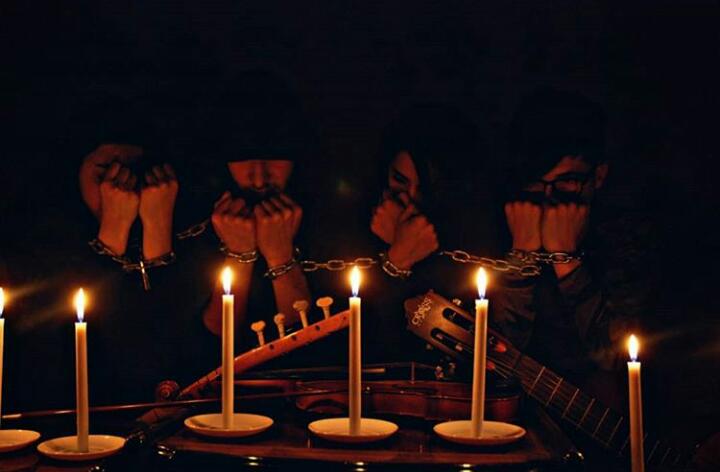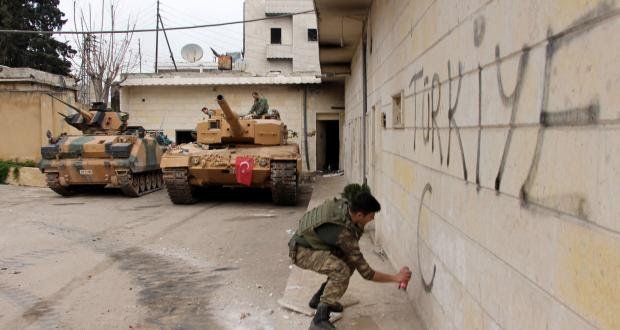Syrian pistachio farmer Said Ahmad stated that for three years in a row, live fire from Turkish forces is terrifying western Kobani’s growers of Aleppine pistachios.
Speaking to Al-Monitor Aug. 22, Ahmad, from the western countryside of Kobani in the eastern Aleppo governorate, said that the Turkish army is shooting at the growers to prevent them from reaching their lands in Kobani, on the Turkish-Syrian border, where their wheat and pistachio crops are languishing unharvested. Ahmad said that three days ago, the Turkish troops opened fire on his uncle in the western Kobani village of Slaim. He escaped injury but was prevented from harvesting his crop.
He said that the Turkish soldiers have fired live ammunition on the village of Ali Shar in eastern Kobani and Zor Mghawer village in western Kobani on a daily basis for years. Many families have had to abandon their orchards and other agricultural lands in the villages bordering Turkey for fear of joining the many farmers already killed.
Khalil Shikho, a pistachio farmer with 20 years of experience from the western Kobani countryside, explained to Al-Monitor that pistachio trees require a great deal of attention and care from the time they are planted until they start bearing fruit at the age of eight.
ALSO READ
WATER ISSUES
Qatar’s agriculture push risks further groundwater depletion
Shikho has more than 5,000 of the finest and best-known varieties of pistachio trees, he said, “such as the Turkish and Assyrian pistachios, for which Kobani is known.” Shikho said this year’s crop has been abundant.
Hammoud al-Ais, from the village of Asaliya in the western countryside of Manbij, eastern Aleppo, said that there are more than 20 varieties of Aleppine pistachios, including the Achoury, pink, Batoury, Nab al-jamal, Lazwardi, Ajamy and Oleimi. He explained that pistachio trees produce in biennial cycles, saying, “Though a tree may bear up to 150 kilograms of pistachios a year, its production drops to 25 kilograms the next year.”
The production of pistachios in Syria was estimated at 65,000 tons in 2010.
Hassan Amr, an agricultural engineer from Qamishli, told Al-Monitor Aug. 25 that the moderate climate and irrigated land make the areas along the Euphrates River the third most important parts of northern Syria after Idlib and Aleppo when it comes to cultivating fruit, olives and pistachios.
He added, “Before the war, Syria was the fourth biggest international producer of the various types of Aleppine pistachios, most of it consumed locally.” He went on, “The rest was exported to a number of Arab and European countries.”
Amr pointed out that Aleppine pistachio trees do not require very rich soil and that they can be cultivated in dry areas as well. He said that they’re relatively impervious to soil salinity, withstand high summer temperatures and low winter temperatures, have good economic returns, are long lived just like olive trees and grow in the same areas as olives, figs and almond trees.
Nohad Mustafa inherited from his father 17 square kilometers (more than 10 square miles) planted with 1,000 pistachio trees in the western Kobani village of Bindar. He told Al-Monitor that there are nearly one million pistachio trees in Kobani, explaining, “Every 200 trees produce one ton of pistachios, which the growers mostly sell to merchants immediately after the harvest. After drying them, farmers sell their pistachios to wholesalers or to factories that process them in Manbij … and [then] sell them to merchants who export them to the Gulf, Jordan and other countries through the Kurdistan Region of Iraq.”
Mustafa explained that the monthlong harvest season starts in mid-August. One kilogram of unprocessed pistachios sells for $3-4, while one kilogram of pistachio kernels sells for at least $6-7.
Commenting pistachio cultivation in Bindar, he said, “Pistachio trees were first planted in our village in the 1960s. My grandfather planted his in the 1970s.”
In Asalyia, Ais and his seven family members work hard to harvest the crops and sell them to pistachio merchants in Manbij.
Just like the other growers, Ais is fearful of the fire from the Turkish army and armed opposition factions in Manbij. He told Al-Monitor Aug. 24, “When the Islamic State took control over the city in 2014, IS fighters seized our crops. Although the People’s Protection Units and Manbij Military Council freed the city from IS in August 2016, we are still horrified by the deadly bullets of the Turkish army and opposition gunmen.”

